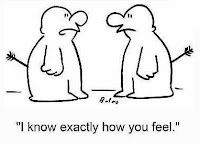The strict teacher is giving a lecture on the most difficult topic. You are all eyes and ears to what she is teaching. Suddenly your friend across the desk yawns and that single yawn is enough to set a relay of yawns across the class. Then, when your best friend yawns, the infectious nature of the yawn affects you too. Alas! The teacher saw you, while your mouth was wide open!
Does seeing others yawning makes you yawn too? That is the power of Yawn.
What is a Yawn?
A yawn is a reflex consisting of the simultaneous inhalation of air and the stretching of the eardrums, followed by an exhalation of breath.
What is a contagious yawning?
Contagious yawning is a well-documented phenomenon that occurs only in humans and chimpanzees in response to hearing, seeing or thinking about yawning.
What are the major culprits?
Fixed Action Pattern – A fixed action pattern (FAP) is an instinctive behavioral response triggered by a very specific stimulus. Fixed action patterns, or similar behaviour sequences, are produced by a neural network known as the innate releasing mechanism in response to an external sensory stimulus known as a sign stimulus or releaser. Once triggered, the FAP behavior can’t be stopped ‘midstream’, but must play out to completion. That is why in the class when one yawns it paves way for a FAP and results into a cascade effect.

Non-Conscious Mimicry – The "chameleon effect" or Non-conscious mimicry refers to the tendency to adopt the postures, gestures, and mannerisms of interaction partners. This type of mimicry occurs outside of conscious awareness, and without any intent to mimic or imitate. So when you see someone yawn, the copycat brain of yours makes you yawn too without your knowledge.
 Mirror Neurons – Mirror neurons, which are found in the areas of the brain involved in motor planning and the initiation of actions. They are important brain cells used for learning, self -awareness and relating to others. Thus a mirror neuron fires when we observe a yawn and initiates a yawn in the observer.
Mirror Neurons – Mirror neurons, which are found in the areas of the brain involved in motor planning and the initiation of actions. They are important brain cells used for learning, self -awareness and relating to others. Thus a mirror neuron fires when we observe a yawn and initiates a yawn in the observer.
Empathy – is the experience of understanding another person's condition from their perspective. You place yourself in their shoes and feel what they are feeling. Only humans, chimpanzees and possibly dogs have been shown to yawn contagiously. Children below the age of 4 do not show contagious yawning. This is because it is after the age of four that empathetic behaviour or emotional aspect is developed. Studies, also shows that you are more likely to copy the yawn of those who are socially and genetically close to you, as compared to any stranger.Even dogs tend to copy the yawn of their owner. This explains why you yawned when you saw your best friend yawn.
Now that you know the contagious power and reason of yawning just beware, a yawning friend is more dangerous than a yawning stranger!
 Mirror Neurons – Mirror neurons, which are found in the areas of the brain involved in motor planning and the initiation of actions. They are important brain cells used for learning, self -awareness and relating to others. Thus a mirror neuron fires when we observe a yawn and initiates a yawn in the observer.
Mirror Neurons – Mirror neurons, which are found in the areas of the brain involved in motor planning and the initiation of actions. They are important brain cells used for learning, self -awareness and relating to others. Thus a mirror neuron fires when we observe a yawn and initiates a yawn in the observer.


